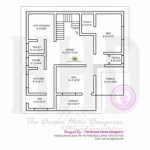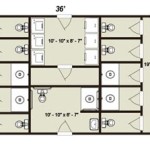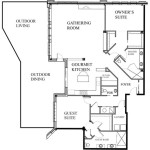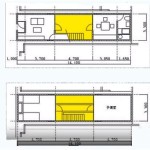Delving into the Essential Aspects of the White House Floor Plan, Third Floor
As we venture to the third floor of the iconic White House, a realm of history, elegance, and functionality unfolds before our eyes. The third floor embodies the private living quarters of the First Family, offering a sanctuary amidst the bustling halls of government. In this exploration, we shall unveil the essential aspects that define this enigmatic level.The Family Residence
At the heart of the third floor lies the Family Residence, a haven of tranquility for the President and their loved ones. This private abode comprises four bedrooms, two bathrooms, a sitting room, and a small kitchen. The décor exudes a sense of warmth and comfort, with furnishings and artwork carefully selected to reflect the First Family's tastes and personality.The Lincoln Bedroom
Among the bedrooms, the Lincoln Bedroom stands as a testament to the legacy of the Great Emancipator. Since the early 20th century, it has been a custom for visiting dignitaries to be hosted in this room. The space is adorned with artifacts and memorabilia associated with President Abraham Lincoln, creating an atmosphere of reverence and historical significance.The East Room
Adjacent to the Family Residence is the East Room, a grand chamber reserved for official functions. This opulent space, often used for receptions, ceremonies, and state dinners, boasts soaring ceilings, intricate moldings, and gleaming chandeliers. The East Room serves as an elegant backdrop for showcasing the architectural beauty and historical grandeur of the White House.The Treaty Room
The Treaty Room, situated on the southwest corner of the third floor, holds a significant place in American diplomatic history. It is here that numerous international treaties and agreements have been signed, shaping the course of global affairs. The room's décor reflects its diplomatic purpose, featuring mahogany paneling, antique maps, and a working fireplace.The Solarium
Adjacent to the Treaty Room is the Solarium, a bright and airy space filled with natural light. This inviting room offers scenic views of the South Lawn and is a favorite spot for the First Family to relax and enjoy the outdoors amidst the urban landscape. The Solarium's walls are adorned with botanical prints, creating a serene and calming atmosphere.The White House Library
Nestled at the end of the third floor corridor, the White House Library serves as a repository of historical and literary treasures. The collection spans various subjects, including American history, politics, and international affairs. The library provides a quiet sanctuary for the First Family and their guests to indulge in the written word.The Rooftop Terrace
Ascending to the rooftop of the White House, visitors are greeted by a spacious terrace. This outdoor oasis offers breathtaking panoramic views of Washington, D.C. The terrace is a popular spot for the First Family to entertain guests and host gatherings, providing a unique perspective on the nation's capital.
Third Floor White House Museum Tour Plans Flooring
On What Floor Of The White House Does President And His Family Live Quora
Photos Show The White House Interior Where Naomi Biden Got Married

How Many Floors Does The White House Have Quora

Mod The Sims White House Fully Furnished With Maxis Content

White House Blueprint Free For 3d Modeling Vintage Plans Layouts Floor
Where Does The President Actually Live In White House Would Office Be Next To His Bedroom Or He Travel Entire Building Between Hours Quora

The West Wing Of White House Floor Plan Enchanted Manor

Mod The Sims White House Fully Furnished With Maxis Content

Farmhouse Style House Plan 6967 The White








